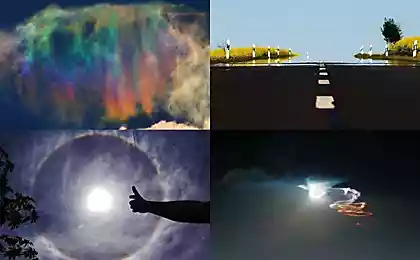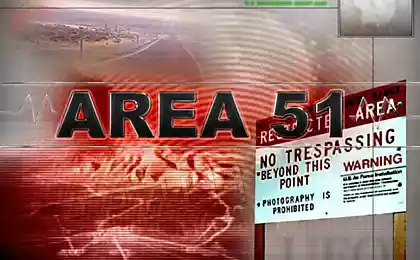921
Kursk Bulge. 50 days of hell
The Battle of Kursk, also known as the Battle of Kursk, Operation "Citadel" it. Unternehmen Zitadelle) is one of the key battles of World War II. It lasted from July 5 to August 23, 1943, and it marked the end of a radical change in the war: German forces permanently lost the strategic initiative.

Expanding the offensive plan fascist command, Stavka decided to deliberate defense wear down and bleed the shock troops of the enemy, and then the decisive counterattack to complete their complete defeat. The defense of the Kursk salient was assigned to the Central and Voronezh fronts. Both fronts had more than 1, 3 million. People to 20 thousand. Guns and mortars, more than 3,300 tanks and self-propelled guns, 2,650 aircraft. Troops of the Central Front (48, 13, 70, 65, 60th field armies, 2 Panzer Army, the 16th Air Army, 9 th and 19 th Independent Tank Corps) under the command of General Rokossovsky should They were repel the enemy from the Eagle. Before the Voronezh Front (38, 40, 6 and 7th Guards, 69th Army, 1st Panzer Army, the 2nd Air Army, the 35th Guards Rifle Corps, 5th and 2nd Guards Tank Corps) , commanded by General Vatutin task it was to repel the enemy from Belgorod. In the rear of the Kursk salient was deployed Steppe IN (July 9 - Steppe Front: 4th and 5th Guards, 27, 47, 53 th Army 5th Guards Tank Army, 5th Air Army, 1 rifle, 3 armored, motorized 3, 3 cavalry corps) is a strategic reserve of the Supreme Command. The troops of the enemy: on the Orel-Kursk sector - the 9th and 2nd Army Army Group "Center" (50 divisions, including 16 tank of motorized and the team - Field Marshal G. Kluge), in the Belgorod-Kursk sector - 4th Panzer Army and Task Force "Kempf" Army Group "South" (commander - General Field Marshal E. Manstein). The commander of the central front in the most likely course of action the main forces of the enemy believed Ponyri, Kursk, and auxiliary -Maloarhangelsk and Hnilec. So he decided to concentrate the main forces of the front on the right wing. The decisive massing of forces and means for the direction of the expected impact of the opponent has created in the band of the 13th Army (32 km) high density - 94 guns and mortars, more than 30 anti-tank artillery guns, tanks, and about 9 to 1 km of the front. The commander of the Voronezh Front has determined that the advance of the enemy may be in directions Belgorod, Obojan; Belgorod, in short; Volchansk, Novyi Oskol. Therefore, the main force, it was decided to concentrate in the center and the left wing of the front. In contrast to the Central Front Army of the first echelon received broad line of defense. But here, in the 6 th and 7 th Guards Army, the density of anti-tank artillery was 15, 6 guns on 1 kilometer of the front, and taking into account the assets placed in the second tier of the front, and 30 guns on 1 kilometer of the front.
On the basis of our investigation and the testimony of prisoners, it was found that the onset of the enemy nchnёtsya 5th of July. Early in the morning on that day on the Voronezh and Central fronts was carried out in a planned fronts and armies artillery counter. As a result, it was possible for 1, 5 - 2 hours delay the onset of the enemy and weaken some of its initial impact. Morning of July 5 Orel grouping the enemy under cover of artillery fire and air support, launched an offensive, striking a major blow to Olkhovatka and support - and at Maloarkhangelsk Fatezh.
Our troops met the enemy exceptional resistance. German troops suffered heavy losses. Only after the fifth attack they managed to break into the front line of defense of the 29th Infantry Corps on Olhovatsky direction. In the afternoon, the commander of the 13th Army, General Pukhov on the main line of advanced several tanks and self-propelled artillery pieces and mobile squads and commander of the front, in the area of Olkhovatka howitzer and mortar crews. Resolute counterattacks tanks in cooperation with the infantry and artillery enemy's advance was halted. On this day, fierce fighting took place in the air. The 16th Air Army supported hostilities defending forces of the Central Front. By the end of the day the cost of enormous losses the enemy succeeded in advancing to the direction Olhovatsky 6 - 8 km. In other areas of his attacks were not successful. Determine the direction of the main effort of the enemy, the front commander decided morning of July 6 strike back from the area on Olkhovatka Gnilusha in order to restore the position of the 13th Army. To counter-attack brought the 17th Guards Rifle Corps of the 13th Army, the 2nd Tank Army General AG Rodina and 19 Panzer Corps. As a result, the enemy counter-attack was stopped before the second defense zone, and suffering heavy losses, could not in the next few days to continue the offensive in all three directions. After a counterattack 2 Panzer Army and the 19th Panzer Corps on the defensive for the second strip, that hardened the position of the troops of the Central Front. On the same day the enemy led offensive in the direction of Oboyan and shorter; the main blows took the 6th and 7th Guards, 69th Army and 1st Panzer Army. Not having success on Olhovatsky direction, the enemy in the morning July 7 made an attack on Ponyri where defending 307th Infantry Division. During the day, she recorded eight attacks. As part of the enemy broke into the north-western outskirts of the station Ponyri, division commander, General MA Enshin focused on them artillery and mortars, followed by the second-tier and gives the tank brigade counterattacked and regained the position. 8 and 9 July the enemy continued to attack and Olkhovatka Ponyri, and on July 10 - and against the troops of the right flank of the 70th Army, but all his attempts to break through the second line of defense was broken. Having exhausted their reserves, the enemy was forced to abandon the offensive and 11 July moved to defense. Against the troops of the Voronezh Front enemy launched a general offensive and morning of July 5, the main blow by the 4th Panzer Army in Oboyan, and supporting operational group "Kempf" - in short. Especially fierce battles took on the character of the Oboyan direction. The commander of the 6th Guards Army, General IM Chistyakov in the first half of the day brought to the first line of defense of the funds anti-tank artillery brigade, two tank and one self-propelled artillery regiment and a tank brigade. By the end of the day the troops of the army inflicted heavy losses to the enemy and stopped the attack. The main strip our defense was broken only in certain areas.
On Korochansky direction the enemy was able to force the south of Belgorod Donetz and seize a small bridgehead. In this situation, the front commander decided to cover Oboyans'ka direction. For this purpose, it is the night of July 6 put forward in the second line of defense 1 Panzer Army General Katukov, and the 5th and the 2nd Guards Tank Corps promptly subordinates 6th Guards Army. Besides the army was strengthened frontline artillery. On the morning of July 6 the enemy resumed the offensive on all fronts. On the Oboyan direction he repeatedly threw in an attack by 150 to 400 tanks, but each time met heavy fire of infantry, artillery and tanks. Only at the end of the day he managed to drive a wedge into the second lane of our defense. On Korochansky direction on this day the enemy was able to complete the breakthrough main line of defense, but its further progress was stopped. 7 and 8 July the Germans to battle fresh reserves again tried to break through to Oboyan, expand breakthrough towards the flanks and deepen it in the direction of Prokhorovka. Up to 300 enemy tanks exploded in the north-east. However, all attempts of the enemy had been paralyzed footwork 10th and 2nd tank corps nominated from a reserve in the area Prokhorovka, and is also active 2nd and 17th air armies. On Korochansky direction of the enemy's attack was also repulsed. Counterblow caused to July 8 compounds of the 40th Army on the left flank of the 4th Panzer Army and part of the 5 th and 2 nd Guards Tank Corps - on its left side, considerably eased the situation of our troops on the Oboyan direction.
From 9 to 11 July the enemy entered into battle, and additional reserves at all costs tried to break along the highway Belgorod to Kursk. On the 6 th Guards and 1 Panzer armies Front Command put forward in a timely manner of its artillery. In addition, to cover Oboyan direction was regrouped from the area Prokhorovka 10 Panzer Corps and the air forces targeted the main, and for the strengthening of the right wing of the 1st Panzer Army had regrouped the 5th Guards Tank Corps. Together, ground and air forces almost all enemy attacks were repulsed. Only 9 July region Kochetovka enemy tanks managed to break through to the third page of our defense. But against them were nominated by two divisions of the 5th Guards Army of the Steppe Front and advanced armored brigade of the 5th Guards Tank Army, who stopped the advance of enemy tanks. At the onset of the crisis the enemy is clearly overdue. Therefore, the chairman of the Supreme Command, Marshal Vasilevsky and commander of the Voronezh Front General Vatutin decided in the morning July 12 strike back from the area Prokhorovka by the 5th Guards Army General A. Zhdanov and the 5th Guards Tank Army General Rotmistrov, as well as by the 6th Guards and 1st Panzer Army in the general direction Yakovlevo for final defeat wedged grouping. From the air counterattack had to provide core strength 2nd and 17th air armies. On the morning of July 12 the troops of the Voronezh Front began a counterattack. The main events took place in the vicinity of the railway station Prokhorovka (line Belgorod - Kursk, 56 km north of Belgorod), which was the largest tank battle of World War II between the advancing enemy tank groupings (4 Panzer Army, Task Force "Kempf ') and applied to counter-attack by Soviet troops (5th Guards Tank Army, 5th Guards Army). Both sides in the battle at the same time involved up to 1,200 tanks and self-propelled guns. Air support of the enemy air force carried out the Army Group "South". The enemy air strikes was applied to 2nd Air Army, part of the 17th Air Army, long-range aviation (made about 1300 sorties). The day of battle, the enemy lost 400 tanks and assault guns, more than 10 thousand. Man.
Unable to reach its goal - to capture the Kursk from the south-east, the enemy (advanced on the southern face of the Kursk salient to a maximum of 35 km) went on the defensive. July 12 the turning point in the Battle of Kursk. On the orders of the Supreme Command troops of the Western and Bryansk fronts launched an offensive in the Orel region. Hitler's command was forced to abandon the offensive plans and 16 July start to withdraw its troops to its original position. The troops of the Voronezh and from 18 July and Steppe Fronts moved to the pursuit of the enemy, and by the end of July 23 went mostly to the line, which took to the top of the defensive battle.

2,

3,
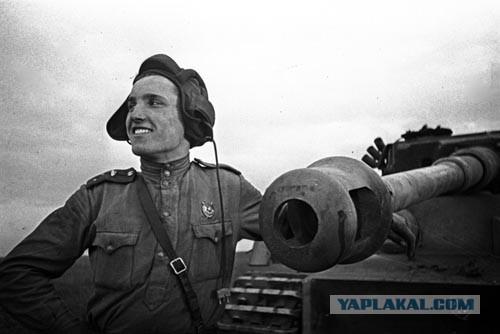
4,
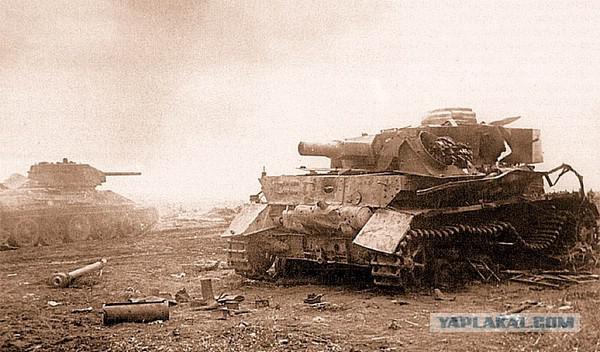
5,
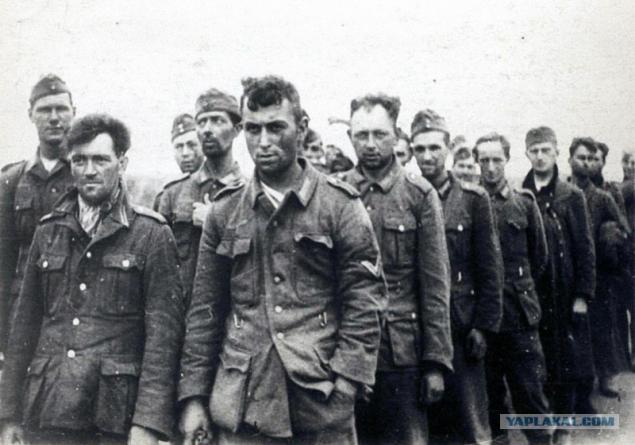
6,

7,
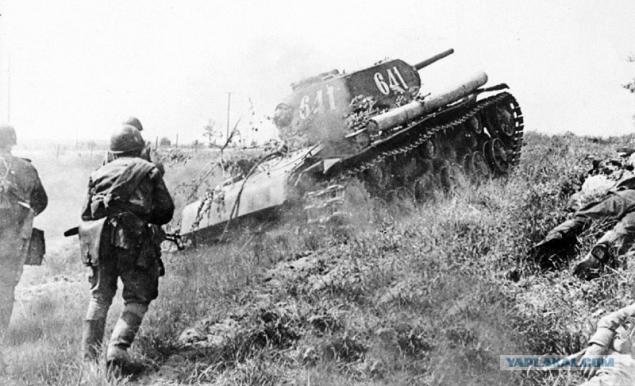
8,

9,

10

11

12

13

14
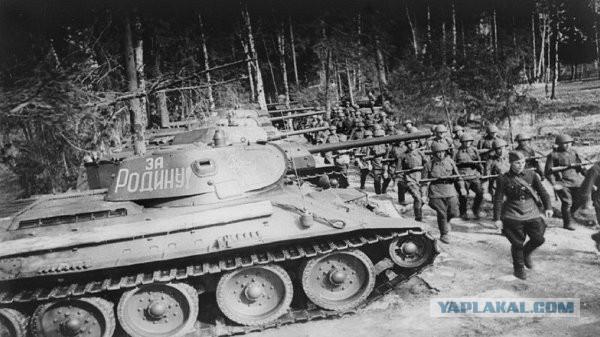
15
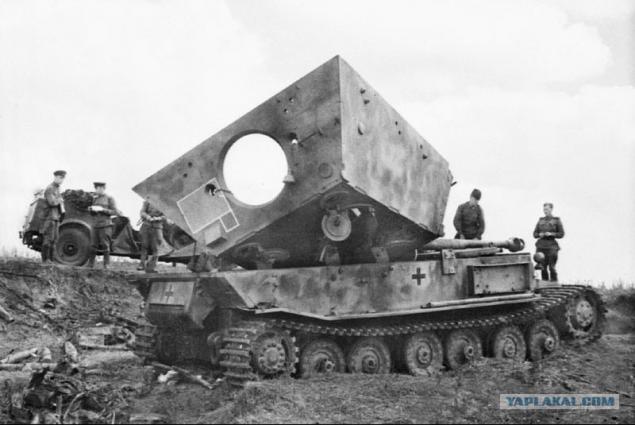
16

17

18

19

20

21

22

23

24
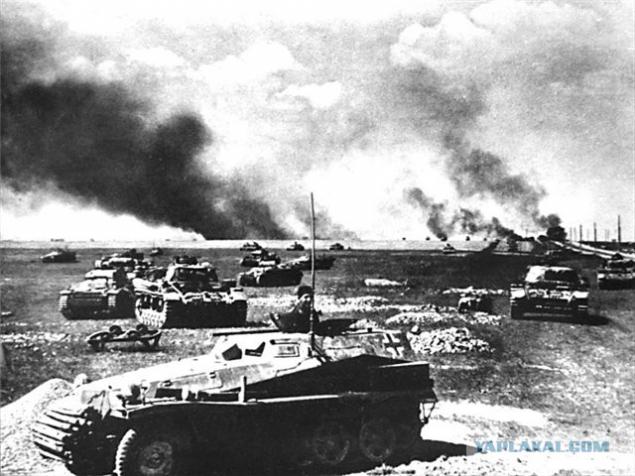
Source:

Expanding the offensive plan fascist command, Stavka decided to deliberate defense wear down and bleed the shock troops of the enemy, and then the decisive counterattack to complete their complete defeat. The defense of the Kursk salient was assigned to the Central and Voronezh fronts. Both fronts had more than 1, 3 million. People to 20 thousand. Guns and mortars, more than 3,300 tanks and self-propelled guns, 2,650 aircraft. Troops of the Central Front (48, 13, 70, 65, 60th field armies, 2 Panzer Army, the 16th Air Army, 9 th and 19 th Independent Tank Corps) under the command of General Rokossovsky should They were repel the enemy from the Eagle. Before the Voronezh Front (38, 40, 6 and 7th Guards, 69th Army, 1st Panzer Army, the 2nd Air Army, the 35th Guards Rifle Corps, 5th and 2nd Guards Tank Corps) , commanded by General Vatutin task it was to repel the enemy from Belgorod. In the rear of the Kursk salient was deployed Steppe IN (July 9 - Steppe Front: 4th and 5th Guards, 27, 47, 53 th Army 5th Guards Tank Army, 5th Air Army, 1 rifle, 3 armored, motorized 3, 3 cavalry corps) is a strategic reserve of the Supreme Command. The troops of the enemy: on the Orel-Kursk sector - the 9th and 2nd Army Army Group "Center" (50 divisions, including 16 tank of motorized and the team - Field Marshal G. Kluge), in the Belgorod-Kursk sector - 4th Panzer Army and Task Force "Kempf" Army Group "South" (commander - General Field Marshal E. Manstein). The commander of the central front in the most likely course of action the main forces of the enemy believed Ponyri, Kursk, and auxiliary -Maloarhangelsk and Hnilec. So he decided to concentrate the main forces of the front on the right wing. The decisive massing of forces and means for the direction of the expected impact of the opponent has created in the band of the 13th Army (32 km) high density - 94 guns and mortars, more than 30 anti-tank artillery guns, tanks, and about 9 to 1 km of the front. The commander of the Voronezh Front has determined that the advance of the enemy may be in directions Belgorod, Obojan; Belgorod, in short; Volchansk, Novyi Oskol. Therefore, the main force, it was decided to concentrate in the center and the left wing of the front. In contrast to the Central Front Army of the first echelon received broad line of defense. But here, in the 6 th and 7 th Guards Army, the density of anti-tank artillery was 15, 6 guns on 1 kilometer of the front, and taking into account the assets placed in the second tier of the front, and 30 guns on 1 kilometer of the front.
On the basis of our investigation and the testimony of prisoners, it was found that the onset of the enemy nchnёtsya 5th of July. Early in the morning on that day on the Voronezh and Central fronts was carried out in a planned fronts and armies artillery counter. As a result, it was possible for 1, 5 - 2 hours delay the onset of the enemy and weaken some of its initial impact. Morning of July 5 Orel grouping the enemy under cover of artillery fire and air support, launched an offensive, striking a major blow to Olkhovatka and support - and at Maloarkhangelsk Fatezh.
Our troops met the enemy exceptional resistance. German troops suffered heavy losses. Only after the fifth attack they managed to break into the front line of defense of the 29th Infantry Corps on Olhovatsky direction. In the afternoon, the commander of the 13th Army, General Pukhov on the main line of advanced several tanks and self-propelled artillery pieces and mobile squads and commander of the front, in the area of Olkhovatka howitzer and mortar crews. Resolute counterattacks tanks in cooperation with the infantry and artillery enemy's advance was halted. On this day, fierce fighting took place in the air. The 16th Air Army supported hostilities defending forces of the Central Front. By the end of the day the cost of enormous losses the enemy succeeded in advancing to the direction Olhovatsky 6 - 8 km. In other areas of his attacks were not successful. Determine the direction of the main effort of the enemy, the front commander decided morning of July 6 strike back from the area on Olkhovatka Gnilusha in order to restore the position of the 13th Army. To counter-attack brought the 17th Guards Rifle Corps of the 13th Army, the 2nd Tank Army General AG Rodina and 19 Panzer Corps. As a result, the enemy counter-attack was stopped before the second defense zone, and suffering heavy losses, could not in the next few days to continue the offensive in all three directions. After a counterattack 2 Panzer Army and the 19th Panzer Corps on the defensive for the second strip, that hardened the position of the troops of the Central Front. On the same day the enemy led offensive in the direction of Oboyan and shorter; the main blows took the 6th and 7th Guards, 69th Army and 1st Panzer Army. Not having success on Olhovatsky direction, the enemy in the morning July 7 made an attack on Ponyri where defending 307th Infantry Division. During the day, she recorded eight attacks. As part of the enemy broke into the north-western outskirts of the station Ponyri, division commander, General MA Enshin focused on them artillery and mortars, followed by the second-tier and gives the tank brigade counterattacked and regained the position. 8 and 9 July the enemy continued to attack and Olkhovatka Ponyri, and on July 10 - and against the troops of the right flank of the 70th Army, but all his attempts to break through the second line of defense was broken. Having exhausted their reserves, the enemy was forced to abandon the offensive and 11 July moved to defense. Against the troops of the Voronezh Front enemy launched a general offensive and morning of July 5, the main blow by the 4th Panzer Army in Oboyan, and supporting operational group "Kempf" - in short. Especially fierce battles took on the character of the Oboyan direction. The commander of the 6th Guards Army, General IM Chistyakov in the first half of the day brought to the first line of defense of the funds anti-tank artillery brigade, two tank and one self-propelled artillery regiment and a tank brigade. By the end of the day the troops of the army inflicted heavy losses to the enemy and stopped the attack. The main strip our defense was broken only in certain areas.
On Korochansky direction the enemy was able to force the south of Belgorod Donetz and seize a small bridgehead. In this situation, the front commander decided to cover Oboyans'ka direction. For this purpose, it is the night of July 6 put forward in the second line of defense 1 Panzer Army General Katukov, and the 5th and the 2nd Guards Tank Corps promptly subordinates 6th Guards Army. Besides the army was strengthened frontline artillery. On the morning of July 6 the enemy resumed the offensive on all fronts. On the Oboyan direction he repeatedly threw in an attack by 150 to 400 tanks, but each time met heavy fire of infantry, artillery and tanks. Only at the end of the day he managed to drive a wedge into the second lane of our defense. On Korochansky direction on this day the enemy was able to complete the breakthrough main line of defense, but its further progress was stopped. 7 and 8 July the Germans to battle fresh reserves again tried to break through to Oboyan, expand breakthrough towards the flanks and deepen it in the direction of Prokhorovka. Up to 300 enemy tanks exploded in the north-east. However, all attempts of the enemy had been paralyzed footwork 10th and 2nd tank corps nominated from a reserve in the area Prokhorovka, and is also active 2nd and 17th air armies. On Korochansky direction of the enemy's attack was also repulsed. Counterblow caused to July 8 compounds of the 40th Army on the left flank of the 4th Panzer Army and part of the 5 th and 2 nd Guards Tank Corps - on its left side, considerably eased the situation of our troops on the Oboyan direction.
From 9 to 11 July the enemy entered into battle, and additional reserves at all costs tried to break along the highway Belgorod to Kursk. On the 6 th Guards and 1 Panzer armies Front Command put forward in a timely manner of its artillery. In addition, to cover Oboyan direction was regrouped from the area Prokhorovka 10 Panzer Corps and the air forces targeted the main, and for the strengthening of the right wing of the 1st Panzer Army had regrouped the 5th Guards Tank Corps. Together, ground and air forces almost all enemy attacks were repulsed. Only 9 July region Kochetovka enemy tanks managed to break through to the third page of our defense. But against them were nominated by two divisions of the 5th Guards Army of the Steppe Front and advanced armored brigade of the 5th Guards Tank Army, who stopped the advance of enemy tanks. At the onset of the crisis the enemy is clearly overdue. Therefore, the chairman of the Supreme Command, Marshal Vasilevsky and commander of the Voronezh Front General Vatutin decided in the morning July 12 strike back from the area Prokhorovka by the 5th Guards Army General A. Zhdanov and the 5th Guards Tank Army General Rotmistrov, as well as by the 6th Guards and 1st Panzer Army in the general direction Yakovlevo for final defeat wedged grouping. From the air counterattack had to provide core strength 2nd and 17th air armies. On the morning of July 12 the troops of the Voronezh Front began a counterattack. The main events took place in the vicinity of the railway station Prokhorovka (line Belgorod - Kursk, 56 km north of Belgorod), which was the largest tank battle of World War II between the advancing enemy tank groupings (4 Panzer Army, Task Force "Kempf ') and applied to counter-attack by Soviet troops (5th Guards Tank Army, 5th Guards Army). Both sides in the battle at the same time involved up to 1,200 tanks and self-propelled guns. Air support of the enemy air force carried out the Army Group "South". The enemy air strikes was applied to 2nd Air Army, part of the 17th Air Army, long-range aviation (made about 1300 sorties). The day of battle, the enemy lost 400 tanks and assault guns, more than 10 thousand. Man.
Unable to reach its goal - to capture the Kursk from the south-east, the enemy (advanced on the southern face of the Kursk salient to a maximum of 35 km) went on the defensive. July 12 the turning point in the Battle of Kursk. On the orders of the Supreme Command troops of the Western and Bryansk fronts launched an offensive in the Orel region. Hitler's command was forced to abandon the offensive plans and 16 July start to withdraw its troops to its original position. The troops of the Voronezh and from 18 July and Steppe Fronts moved to the pursuit of the enemy, and by the end of July 23 went mostly to the line, which took to the top of the defensive battle.

2,

3,

4,

5,

6,

7,

8,

9,

10

11

12

13

14

15

16

17

18

19

20

21

22

23

24

Source:















